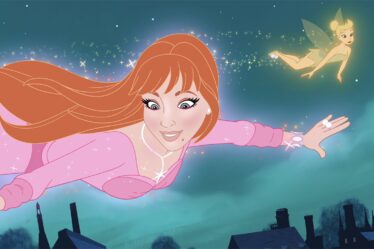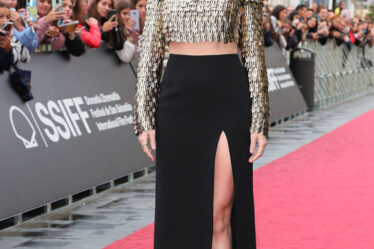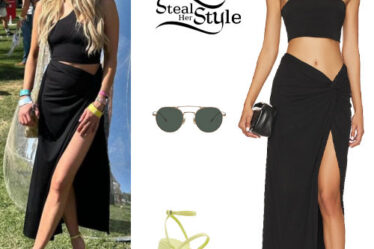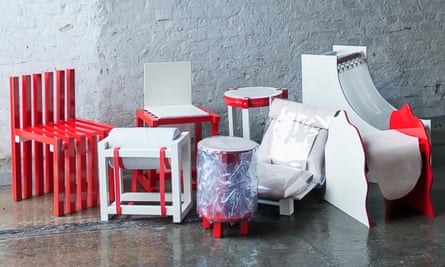
If you want to see the full range of expression of which a Swede is capable, just mention Ikea. Annoyance, amusement, pride and resentment flit across Terese Alstin’s face as she forms a response. “It’s a love-hate relationship,” she says finally, laughing.
We’re tucking into an exquisite lunch of chicken and asparagus at the Mat- & Chokladstudion cafe in Malmö. Sweden’s third-largest city is renowned for its independent design scene – with boutiques and design-forward restaurants that are open year round – but right now, just before the third Southern Sweden Design Days (SSDD), there’s an almost audible crackle of creative energy in the air. Terese is strategic manager at the Form/Design Center, the organisation behind the event, which takes place on 25-28 May. More than 60 venues across Malmö will be involved, turning the city into a sprawling design museum. About 85% of participants are one-person companies.
The theme for 2023 is “Dissonance”, appropriate for a festival that appears to pit designer Davids against Ikea’s Goliath. And yet – in the Swedish spirit of inclusivity – Ikea, too, will be part of the festival, hosting a seminar on the role of dissonance in design. “They are a part of Swedish design, but we wouldn’t want them to become an official sponsor,” says Terese. “I feel it’s my responsibility to change the perception of what Swedish design is about.”
Terese and I grab coffee and kanelbullar (cinnamon buns) and go to meet designer Anna Gudmundsdottir for a spot of fika: the twice-daily social coffee breaks built into the fabric of Swedish society. Pastries are mandatory.
We step into Anna’s “hoarder’s studio” (her words). Against one wall, old shop display parts and pipes are locked in a complex embrace – pull one out, I think, and the whole lot would tumble. On her desk is a clutter of Carrara marble offcuts, which she tells me would have been ground up and used in asphalt if she hadn’t saved them.
Lately, Anna has channelled her hoarding tendencies into founding the Malmö Upcycling Service, which supplies leftover materials to designers. She shows me examples of her recent works: a lamp made from ventilation tubes, a cabinet made from leftover shipbuilding vinyl. I wouldn’t know they were upcycled if Anna hadn’t told me. “It doesn’t have to look like waste,” she says. “It’s not waste – it’s a resource.”
Anna’s designs are available in the Form/Design Center shop – and during SSDD she, along with many others, will be exhibiting at BISe, a quintessentially Scandi restaurant that’s all clean-lined chairs and rippling glassware. At dinner that evening, the interiors are upstaged only by the creative clashes on my plate: pairings such as halibut and passionfruit, rhubarb and cardamom. I brace myself for a Stockholm-style bill, but the three-course meal, as with most things in Malmö, is surprisingly reasonably priced at 600kr (£46), excluding drinks.
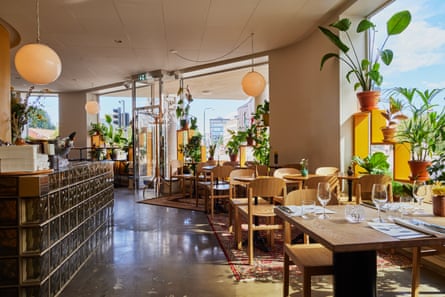
It’s much-needed fuel for a whirl through Malmö’s designer boutiques: hand-thrown pots at AB Småland, Technicolor homeware at Designtorget, and frilly dresses at Beyond Us, where decor and merchandise are as pink as the cherry blossom trees lining Malmö’s canals. While dodging bicycles, I marvel at the juxtaposition of cobbled streets and modern buildings with glittering glass facades that shift and dance in the sun. I come to rest at Mitt Möllan, another SSDD venue, which was once a dated shopping mall; now, it’s an incubator for fledgling design businesses. “We meet them when they’re green and they’re here with their mums,” says Kajsa Blum, Mitt Möllan’s brand strategist.
Any business is welcome, as long as it meets Mitt Möllan’s criteria for sustainability and locally made goods. I peer into Ateljé Laga, where Mexican designer Verónica Luna is stitching floral fabric scraps on to a handbag. Customers bring their old garments to Verónica; she redesigns them with embroidery and lace before handing them back. She’s currently working on a denim line with Phoenix and Friends, a secondhand clothing store across the corridor.
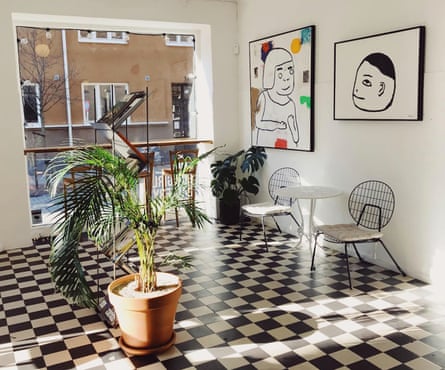
The variety here is dazzling. Stepping across the mall’s faux terrazzo floors, I encounter huge, crepe-paper flowers in the window of Pill & Punch, and a Song-o-matic recording booth where visitors record anonymous confessions, to be transformed into whispering works of sound art by the Finnish musician Elee Loop. On seeing a wall of posters by the Malmö-based graphic artist Magoz, I pause. Kajsa notices my confusion.
after newsletter promotion
It’s all so unlike the Swedish design I thought I knew. Peer behind the massive, monolithic brands and you will find the grassroots growing, sprouting multicoloured flowers – if only people would bother to look. In the 19th-century Folkets Park, Terese and I stroll by a pastel menagerie of bicycle-sized bumblebees and water-lily fountains. Malmö’s designers collaborated on Folkets’ playgrounds: I hear delighted shrieks and turn to see children scaling what looks like a space shuttle. Other playgrounds are inspired by safaris and fairytales. There’s not a flat-pack Lack table in sight.
Our final stop is the Cowgirl Gallery. Founder Selma Modéer Wiking shakes my hand with a firm grip, then hands me a bottle of kombucha from the Malmö-based company Gaëlle.

Selma was planning a move to Berlin when she walked past the then-vacant space in which we now sit. On impulse, she decided to stay in Malmö instead, and set up Cowgirl – a cafe, gallery, co-working space, performance space, cinema and boutique. “I want to have everything I love: good coffee, a new exhibition every month, poetry, live music,” she says, talking rapidly.
Backed by government funding, Selma has seemingly limitless agency; the gallery changes according to her whims. “I used to have ceramics here, but it’s so trendy,” she says, rolling her eyes. “I want to sell magazines you can’t find anywhere else, and posters – posters are the most democratic form of art.”
She pauses for a sip of kombucha. Behind tortoiseshell-rimmed glasses, her eyes dart about the space – I can tell that she is already visualising next month’s exhibition. “When you have accessibility to art and an affordable city to live in, you have time to create,” she says. “It is an extreme luxury to live in a country where you can be odd.”
The trip was provided by Form/Design Center and Visit Sweden, with accommodation at MJ’s Hotel (doubles from £86 room only)

